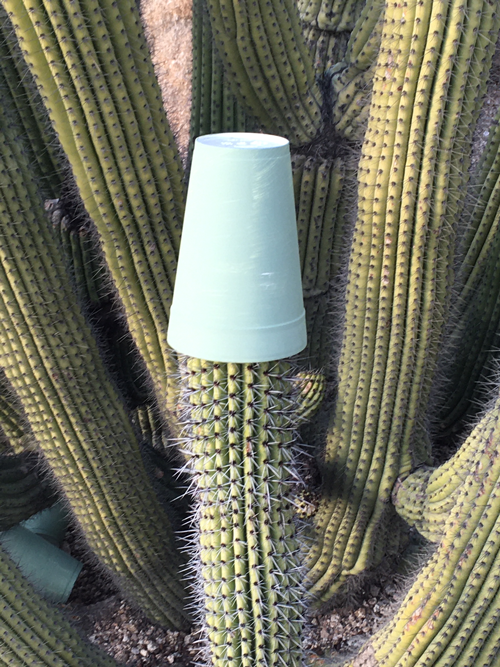What is going on with this plant? Is this where Styrofoam cups come from?
Is this desert decorating or cactus camouflage?
Is it just a prank or is it neighbors helping neighbors?
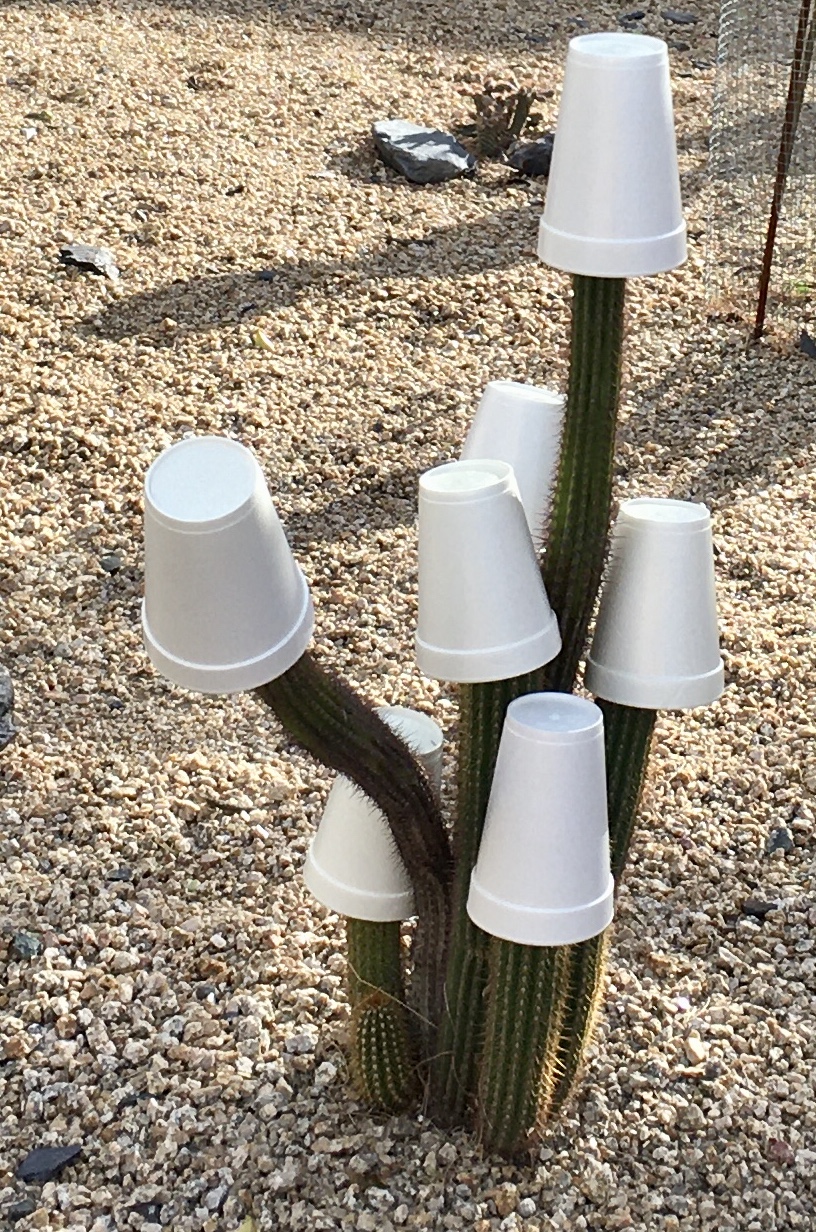
When I first visited Arizona from Oregon, it was January, and during the day, I wore shorts. However, I was amazed to observe that residents were dressed in sweatpants, boots, and heavy jackets. The temperature ranged from 45 to 75 degrees Fahrenheit — which is summer weather in Oregon — and the sun was shining every day, so I couldn’t understand why the locals were bundled up.
Now that I’ve lived here for almost twenty years and experienced the 114 plus degree summers, I get it. To survive the heat, your blood thins and suddenly anything below 85 degrees feels cold. When it gets below 50 degrees, you start wearing flannel shirts, heavy coats and sweaters.

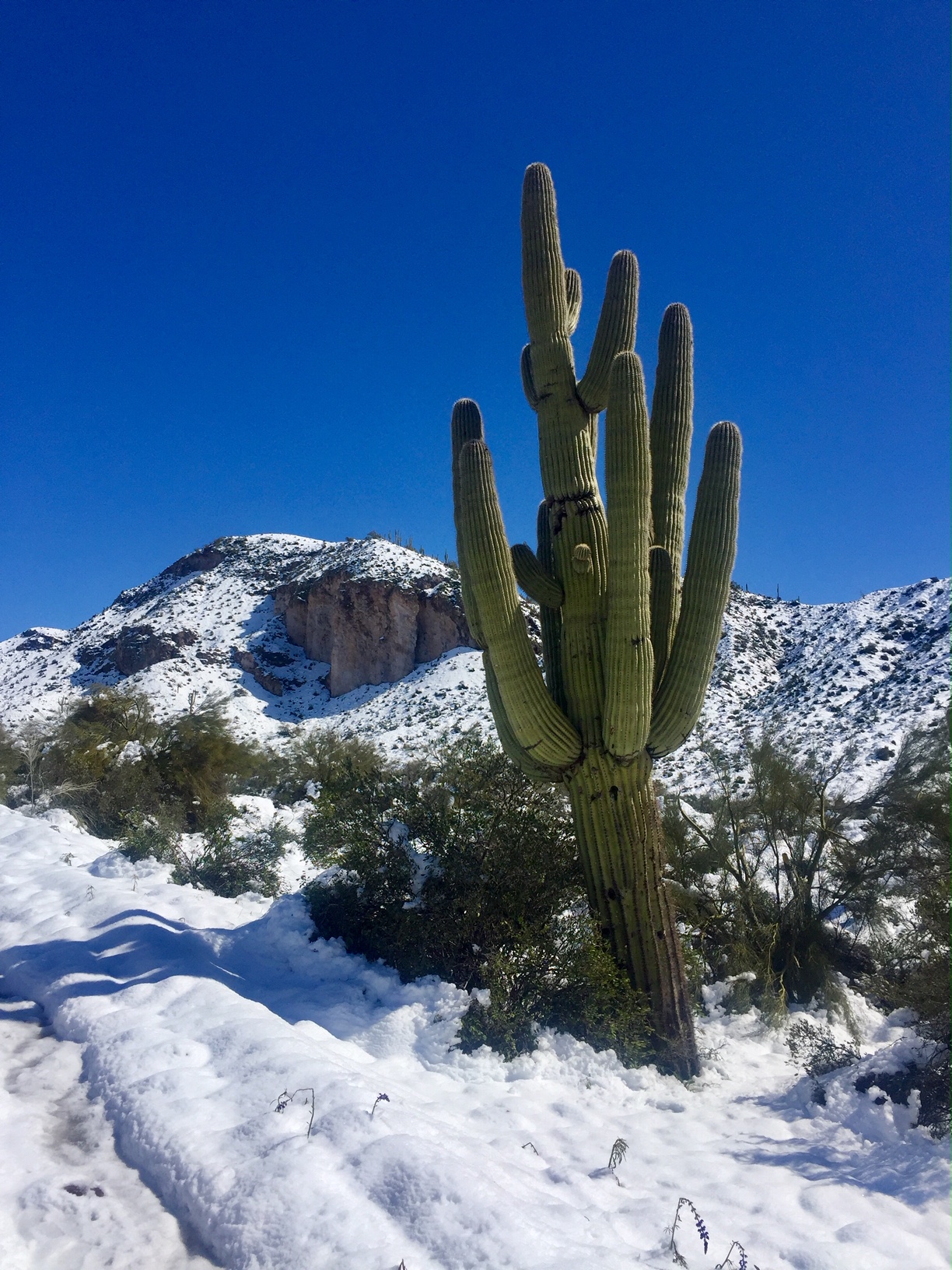
So, it is logical that many desert dwelling plants would find the winter season in Arizona exceptionally challenging, if not deadly. We even have snow occasionally in Phoenix and Cave Creek. In fact, in 2019, Cave Creek had 1.5 inches of snow on the ground when we woke up. My friend, Jackie Gibson Cheek, let me use her pictures to document it. The taller mountains around us had snow on them for several days.
Of course, some of the native cacti are pretty much immune to cold, as are cactus imports from places like Canada and the Rocky Mountains. Several varieties of Prickly Pear (Sept. POTM), the Cholla (October POTM), and Barrel Cactus (coming soon) are all winter weather tolerant.
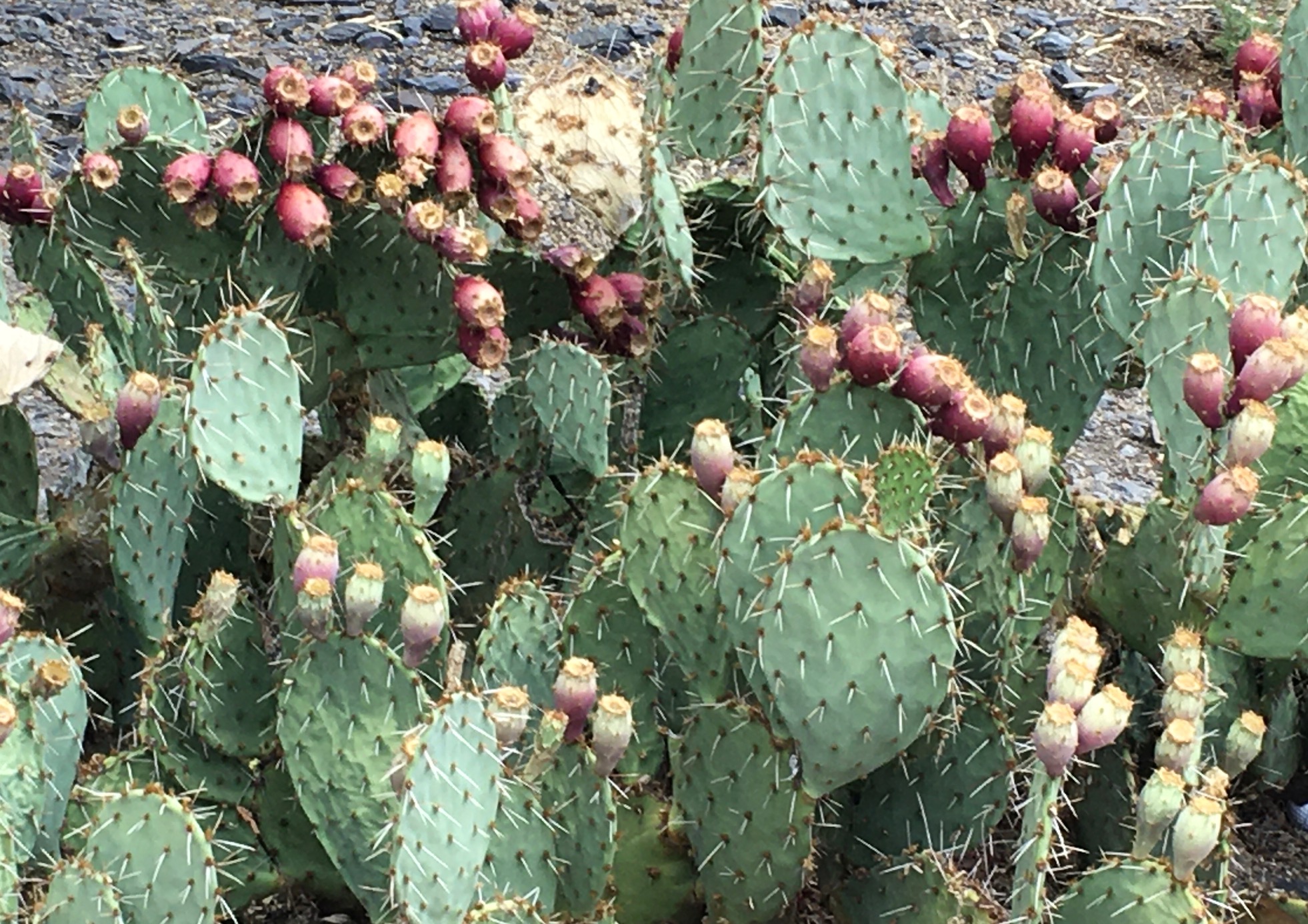
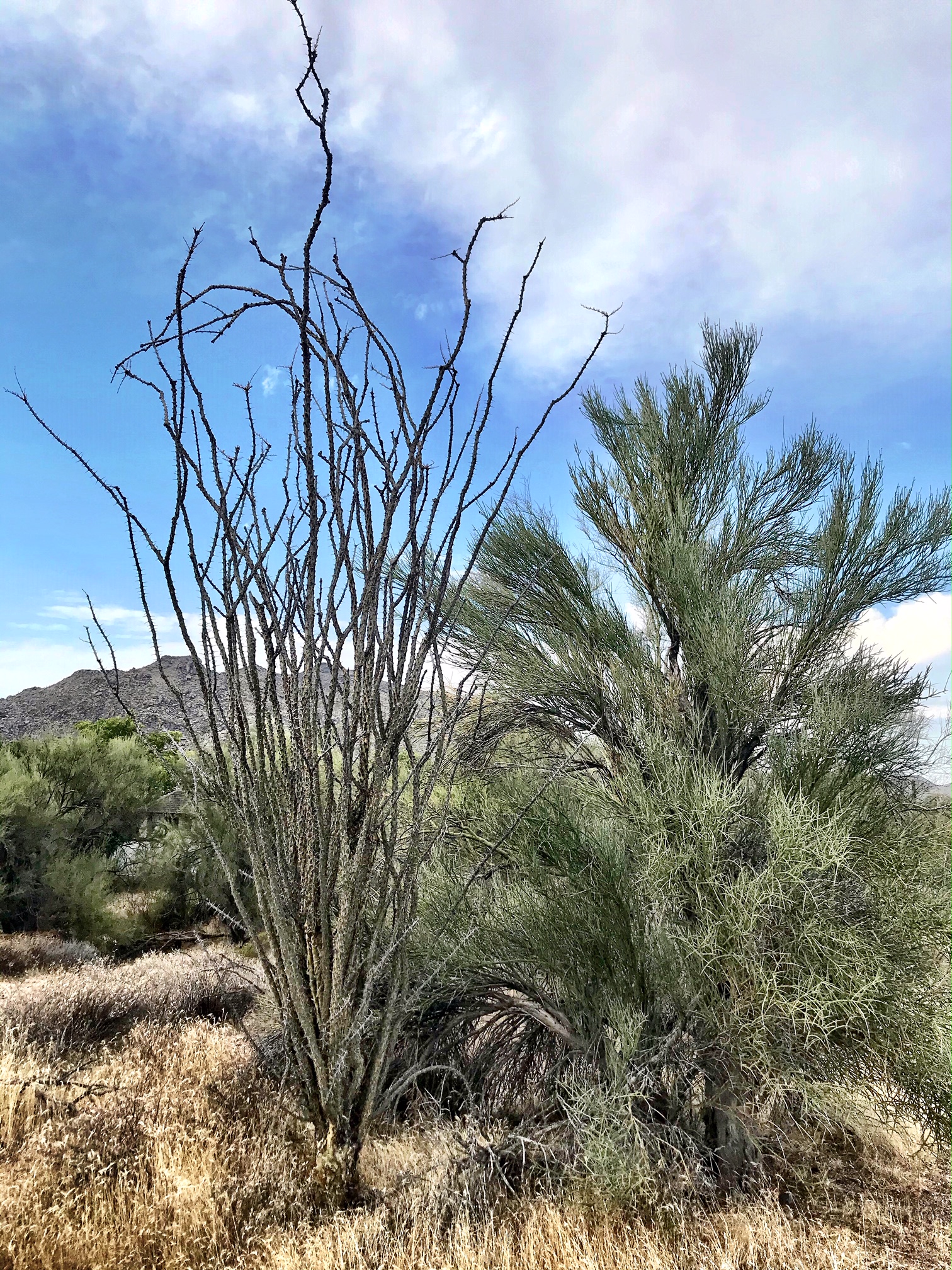
But other cacti are not so well-adapted, and they use other mechanisms to survive. The Ocotillo, November’s POTM, uses the technique of going dormant whenever it’s too hot, too cold, or too dry for it to bloom. This is the same technique deciduous trees use when they shed their leaves in the fall, except it’s an all-year event for the Ocotillo.
Going dormant is a common technique for many plants, and cactus do it when it’s too cold for them by stopping all growth and using very few cellular functions so that they need less water. They do this in the hot summers as well to conserve moisture when water is scarce, but in the winter, it’s to prevent their interior water from freezing which would turn their cell walls into mush. If there is too much ice inside, the interior cells explode. On the other hand, when internal water levels are low, then all the compounds inside the cactus cells become highly concentrated which creates a kind of natural anti-freeze. Cactus can also shift some of their water out of their cells and into the spaces between the cells where the ice crystals will do less damage.
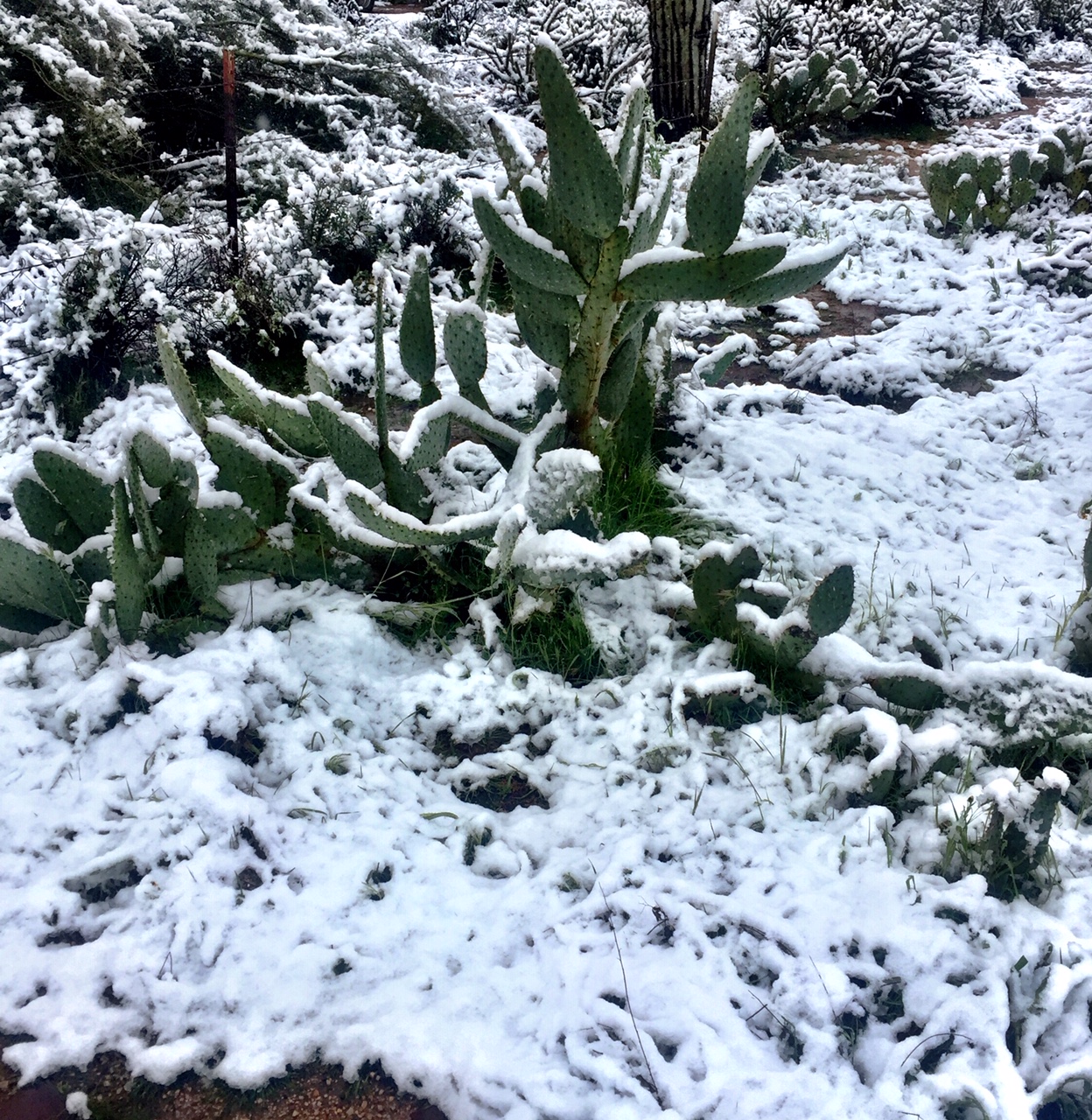

Using these strategies, most cacti can survive a night or two of freezing weather. But if it goes on for too long or if the cactus is especially vulnerable, damage can result. Initially, when a part of a cactus turns white, it has been frozen. If it turns white and then purple, it is probably healing itself, so leave it alone for a while. Then just cut out the black parts. If it turns from white to black, wait until it is warm again and then cut out the black parts. Don’t leave them there as they are dead and rotting and will kill the plant. Once they are gone, however, the cactus will usually recover and put out new growth.
But cactus can also get some help from humans in the form of frost protection, especially for cacti with long arms or limbs where the tenderest, youngest portion of the growing plant is at the tip. There are special plant coverings sold by garden supply stores that will protect the whole plant, but they usually need to be removed during the day. Instead, the easiest thing to do is to cover the tips of your vulnerable cacti with Styrofoam cups.
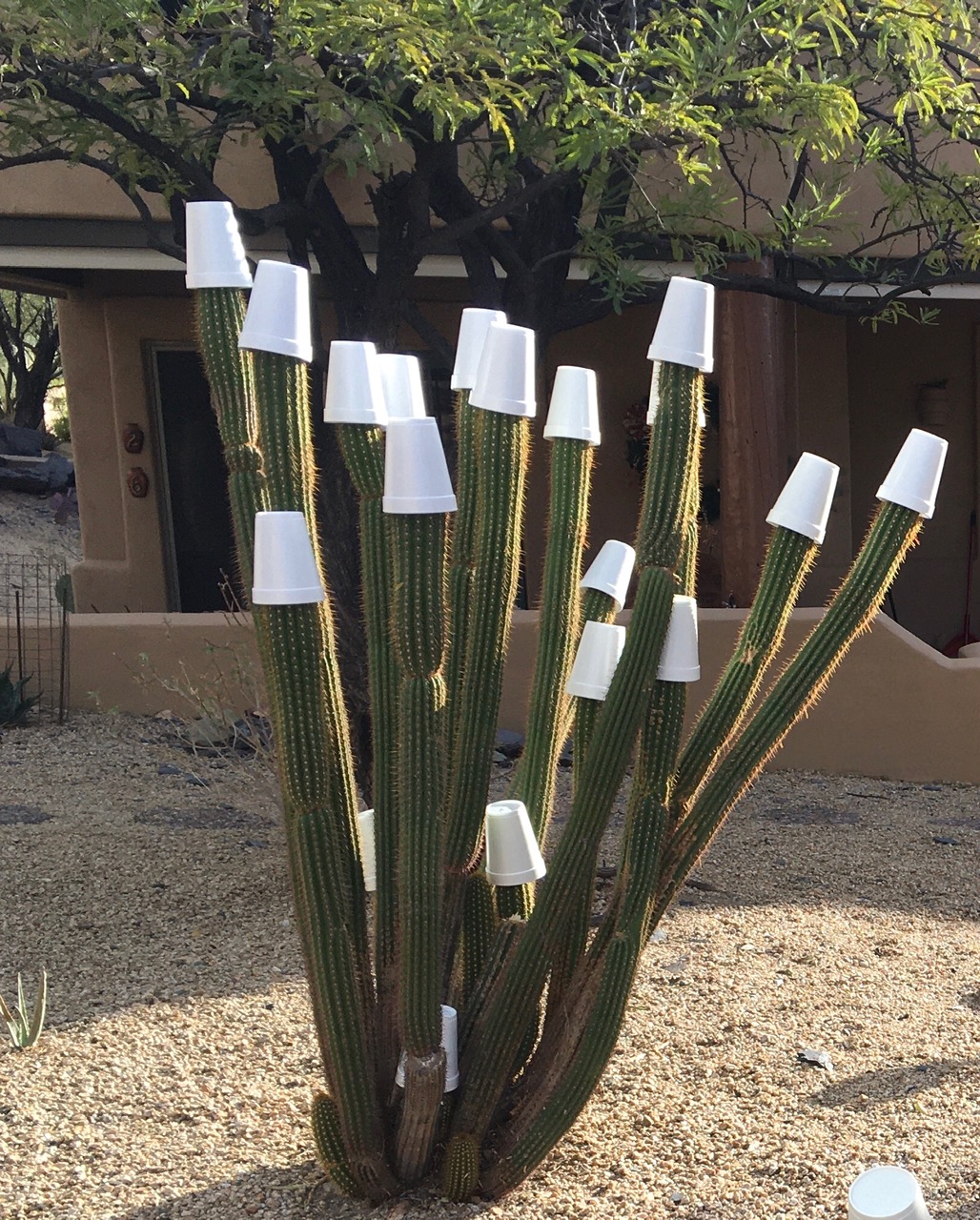
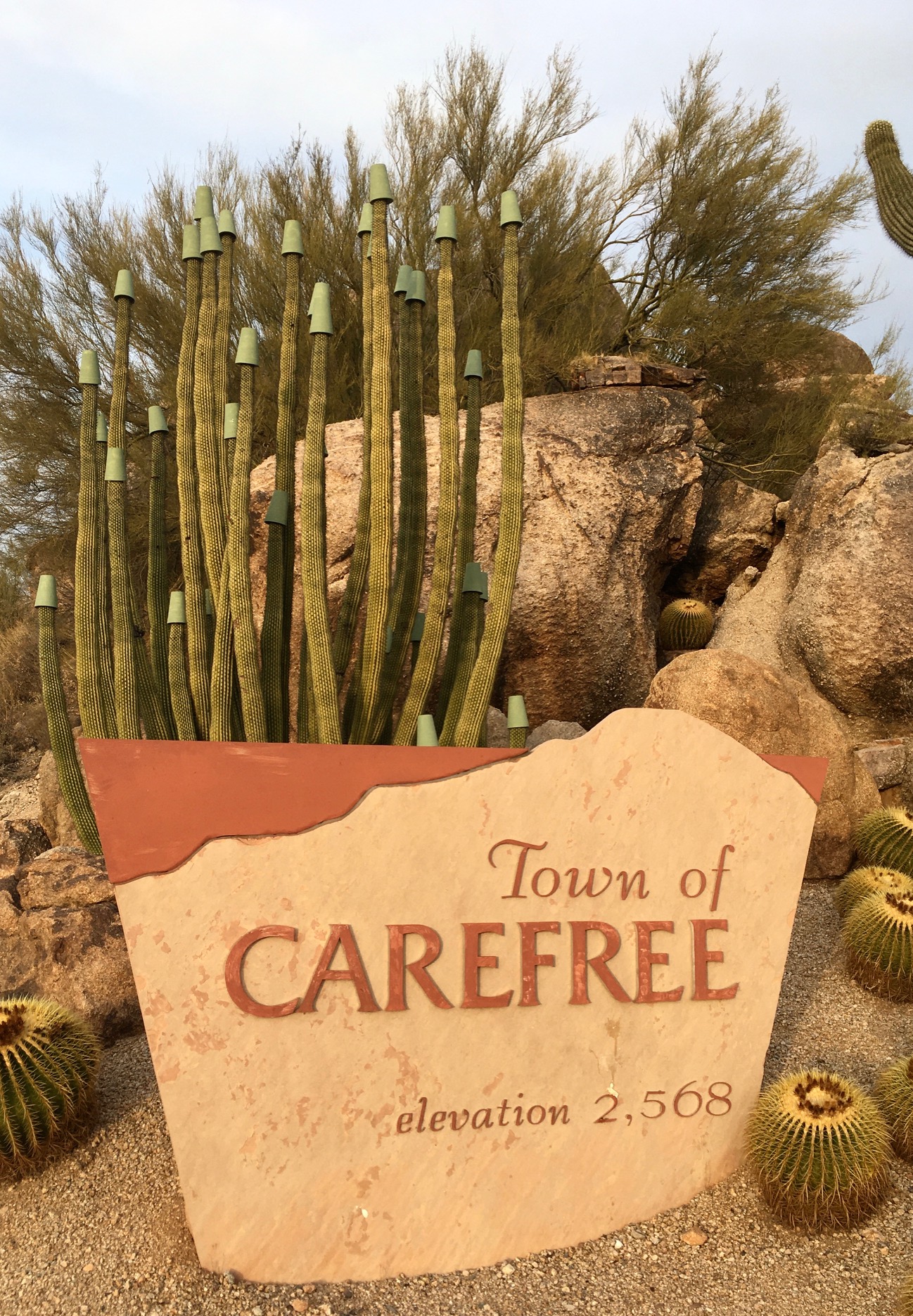
The local town of Carefree has gone all out with green colored Styrofoam to make the intervention less noticeable. All the plants at Sundial Circle, and even the ones at the entrance to the town are well protected.
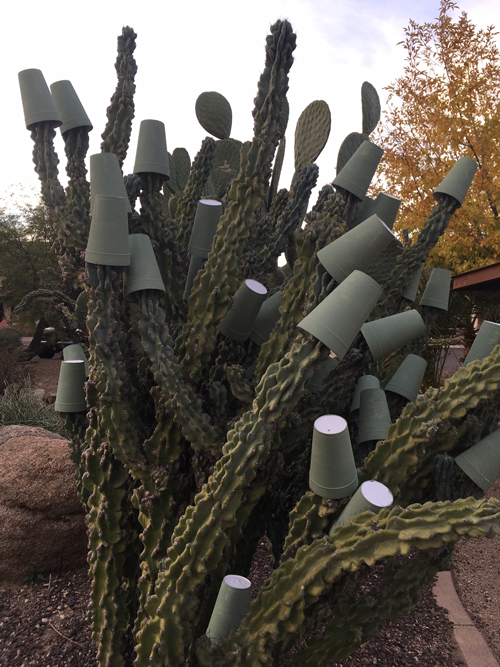
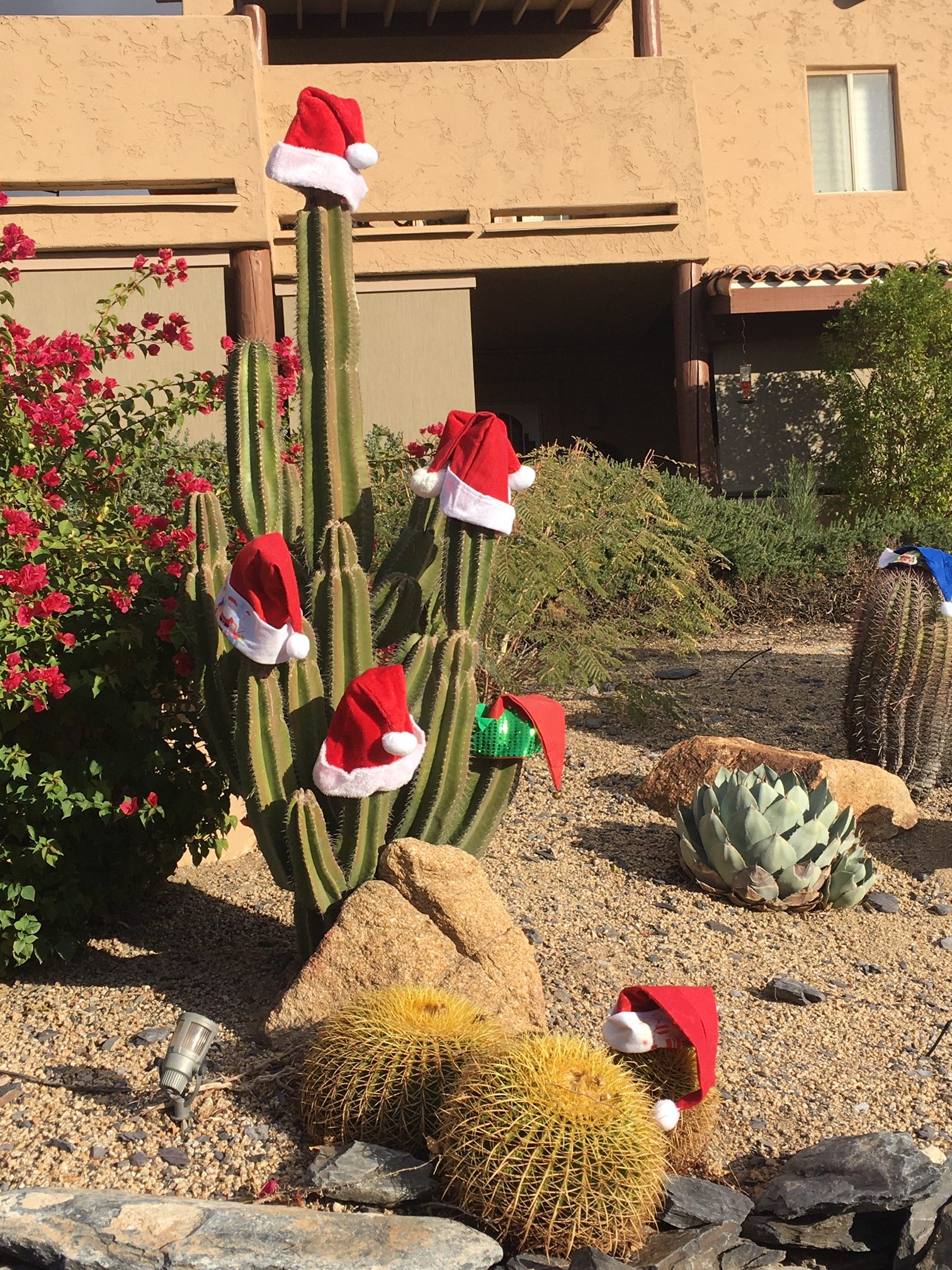
My condo neighbors got into the holiday spirit by using Santa hats instead of cups which definitely extends the holiday mood.
You might say our community got a little too carried away by adding a few holiday tree ornaments as well.
On the other hand, we appreciate our desert foliage, so perhaps the whole exercise is simply motivated by a desire for neighbors to look out for neighbors?

